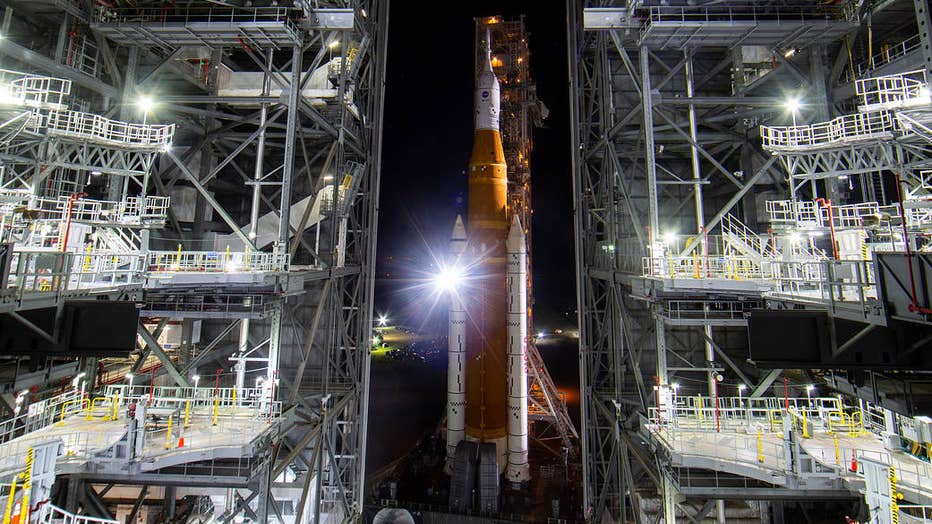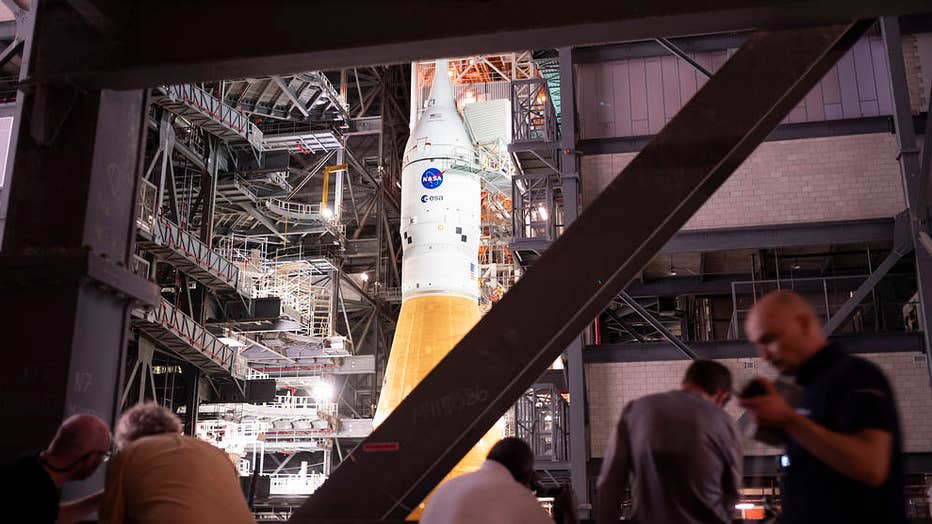NASA moon rocket back in hangar as Ian approaches Cape Canaveral
Artemis I was safely rolled back to the Vehicle Assembly Building at Kennedy Space Center ahead of the arrival of Hurricane Ian. [Credit: NASA]
NASA’s moon rocket returned to the safety of its hangar Tuesday as Hurricane Ian approached Florida, its launch now unlikely before mid-November.
Instead of trying to send it on its first test flight, the launch team moved the 322-foot (98-meter) rocket off the pad at Kennedy Space Center. The four-mile (6.4-kilometer) trip took all night.
Early Thursday morning, the National Hurricane Center adjusted the path for Hurricane Ian, shifting the storm just to the north of Kennedy Space Center. The hurricane was expected to be downgraded to a strong tropical storm before emerging over the Atlantic Ocean.

NASA’s Space Launch System (SLS) rocket with the Orion spacecraft aboard is seen atop a mobile launcher inside the Vehicle Assembly Building. [Credit: NASA/Joel Kowsky]

NASA’s Space Launch System (SLS) rocket with the Orion spacecraft aboard is seen atop a mobile launcher in High Bay 3 of the Vehicle Assembly Building. [Credit: (NASA/Joel Kowsky]
NASA official Jim Free said it would be difficult to upgrade the rocket and get it back to the pad for an October launch attempt. Putting in fresh batteries is particularly challenging, Free noted, making it doubtful a launch could be attempted before the mid-to-late October launch period closes. The next two-week window would open Nov. 12.
The Space Launch System rocket should have blasted off a month ago, but was delayed twice by fuel leaks and engine issues.
Once in space, the crew capsule atop the rocket will aim for lunar orbit with three test dummies, a crucial dress rehearsal before astronauts climb aboard in 2024. The last time a capsule flew to the moon was during NASA’s Apollo 17 lunar landing in 1972.
SpaceX’s next astronaut flight to the International Space Station for NASA, meanwhile, has been delayed at least one day by the hurricane. Liftoff is now no earlier than next Tuesday.

